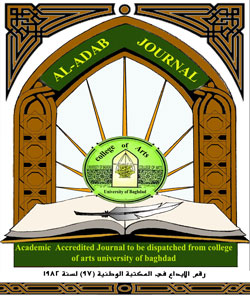The name of the Gulf between the Ottomans and the British
DOI:
https://doi.org/10.31973/3g90gx49Keywords:
The Gulf, Ottoman, Historical geographical maps, CartographersAbstract
This research seeks to elucidate the nomenclature of the Arabian Gulf, focusing on its varying designations across nations that held nominal or actual dominion over the region. The investigation concentrates on two principal actors, namely the Ottoman Empire and the British Crown Empire, each driven by distinct political and economic motives in its delineation of the Gulf's nomenclature. The study commences by exploring the cartographic landscape, the development of cartography, and identifying essential sources underpinning historical geographic maps. Furthermore, it elaborates on the Ottoman involvement in the region and profiles significant Ottoman cartographers. Similarly, the study addresses the British engagement in the area and highlights the prominent English cartographers of the era. Subsequently, a comparative evaluation of historical geographical maps spanning the 16th, 17th, and 18th centuries is undertaken. The research draws from documented images made accessible through collaboration with Dr. Sultan Al Qasimi Darah in Sharjah. The comparative assessment culminates in a generalized inference that underscores the pivotal role of political and economic factors, as well as inter-state relationships, in shaping the genesis of the nomenclature during the examined historical epoch. As a recommendation, the study emphasizes the importance of discerning the underlying motives that informed nomenclatural choices when interpreting historical maps of the Gulf region and that contemporary platforms, like modern social media, which often lack historical context, should be approached with a prudent awareness.
Downloads
References
cartography in ottoman times. (2012, January 14). Retrieved from hurriyetdailynews.com: https://www.hurriyetdailynews.com/cartography-in-ottoman-times-11437
التركي , ق. م. (2020, ابريل 9). أقدم الأسماء العربية للخليج العربي في الكتابات المسمارية. Retrieved from www.akhbar-alkaleej.com: www.akhbar-alkaleej.com/news/article/1220717
الجوري, ر. ر. (2014). مقدمة في علم الخرائط (الأولى ed.). العراق: المكتب الجامعي الحديث.
الجوهري , ي. (1997). الخرائط الجغرافية. الاسكندرية: مكتبة الاشعاع للطباعة و النشر و التوزيع.
الحمداني, ط. ن. (2011). الخليج و الجزيرة العربية بين القرن السادس عشر و العشرين (الأولى ed.). مصر: شركة الوراق للنشر و الطباعة.
الخصوصي, ب. ع. (1984). دراسات في تاريخ الخليج العربي الحديث و المعاصر (الثانية ed.). الكويت: منشورات ذات السلاسل.
الرستماني, أ. ح. (1993). الخليج و تراثة المعماري. دبي: وزارة الإعلام و الثقافة.
العقيلي, م. ا. (1983). الخليج العربي في العصور الاسلامية منذ فجر الاسلام حتى مطله العصور الحديثة. بيروت: دار الفكر العربي.
العنقري, خ. (2001). الجزيرة العربية في الخرائط الأوروبية القديمة بين ناهية القرن الخامس عشر و بداية القرن التاسع عشر. باريس: معهد العالم العربي .
القاسمي, س. (2016). صراع القوى و التجارة في الخليج 1620-1820. الشارقة: منشورات القاسمي.
المعاني, ع. م. (2001). التجارة و الملاحة في الخليج العربي خلال القرن السابع عشر. الشارقة: دائرة الثقافة و الإعلام.
الهلاوي, م. ع. (2012). الكشوف الجغرافية أطلس تاريخي مصور. جدة: مكتبة ابن سيناء.
دارة الدكتور سلطان القاسمي. (2023). قاعة مكة المكرمة. الشارقة: دارة الدكتور سلطان القاسمي.
عزيز, م. ا. (2018). مبادئ علم الخرائط. القاهرة: المكتب العربي للمعارف.
قلعة المعظم. (2012, يناير 14). Retrieved from google.map.com: https://www.google.com/maps/place/Al+Mua'azam+Fort/@27.7408897,37.506187,17z/data=!3m1!4b1!4m6!3m5!1s0x15a63b76659d1e29:0x2b91f0524d20eed4!8m2!3d27.7408897!4d37.5087619!16s%2Fg%2F12245lp7?entry=ttu
قلعة المعظم. (2023, سبتمبر 13). Retrieved from google.map.com: https://www.google.com/maps/place/Al+Mua'azam+Fort/@27.7408897,37.506187,17z/data=!3m1!4b1!4m6!3m5!1s0x15a63b76659d1e29:0x2b91f0524d20eed4!8m2!3d27.7408897!4d37.5087619!16s%2Fg%2F12245lp7?entry=ttu
منشورات القاسمي. (2022). المعجم التاريخي للغة العربية. الشارقة: منشورات القاسمي.
ندم الملك فيصل على هدم منارة مسجد الدبس. (2014, يوليو 21). Retrieved from youtube: https://www.youtube.com/watch?v=ke41ET8puRs
ياغي, ا. أ. (2014). الدولة العثمانية في التاريخ الإسلامي الحديث. الرياض: العبيكان للنشر.
Downloads
Published
Issue
Section
License
Copyright (c) 2024 علي ابراهيم المري، د. سيف البدواوي

This work is licensed under a Creative Commons Attribution 4.0 International License.
Copyright and Licensing:
For all articles published in Al-Adab journal, copyright is retained by the authors. Articles are licensed under an open access Creative Commons CC BY 4.0 license, meaning that anyone may download and read the paper for free. In addition, the article may be reused and quoted provided that the original published version is cited. These conditions allow for maximum use and exposure of the work.
Reproducing Published Material from other Publishers: It is absolutely essential that authors obtain permission to reproduce any published material (figures, schemes, tables or any extract of a text) which does not fall into the public domain, or for which they do not hold the copyright. Permission should be requested by the authors from the copyrightholder (usually the Publisher, please refer to the imprint of the individual publications to identify the copyrightholder).
Permission is required for: Your own works published by other Publishers and for which you did not retain copyright.
Substantial extracts from anyones' works or a series of works.
Use of Tables, Graphs, Charts, Schemes and Artworks if they are unaltered or slightly modified.
Photographs for which you do not hold copyright.
Permission is not required for: Reconstruction of your own table with data already published elsewhere. Please notice that in this case you must cite the source of the data in the form of either "Data from..." or "Adapted from...".
Reasonably short quotes are considered fair use and therefore do not require permission.
Graphs, Charts, Schemes and Artworks that are completely redrawn by the authors and significantly changed beyond recognition do not require permission.
Obtaining Permission
In order to avoid unnecessary delays in the publication process, you should start obtaining permissions as early as possible. If in any doubt about the copyright, apply for permission. Al-Adab Journal cannot publish material from other publications without permission.
The copyright holder may give you instructions on the form of acknowledgement to be followed; otherwise follow the style: "Reproduced with permission from [author], [book/journal title]; published by [publisher], [year].' at the end of the caption of the Table, Figure or Scheme.












